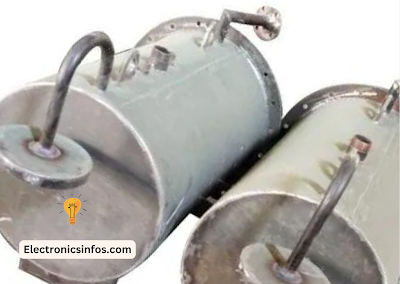The Conservator Tank of the Transformer
Working Principle of Conservator Tank
When Temperature Increase
When Temperature Decrease
Construction of Conservator Tank
Parts Of the Conservator Tank Of Transformer
- Tank Body
- Diaphragm or Bladder
- Inlet and Outlet Fittings
- Breather
- Level Gauge
Tank Body
Diaphragm or Bladder
Inlet and Outlet Fittings
Breather
Level Gauge
Types of Level Gauges
- Float-type Level Gauges
- Capacitive Level Gauges
- Radar Level Gauges
- Ultrasonic Level Gauges
- Electromagnetic Level Gauges
- Hydrostatic Level Gauges
- Visual Level Gauges
- Nuclear Level Gauges
- Vibrating Wire Level Gauges
Types of conservator tanks Of Transformer
- Standard Conservator Tank
- Buchholz Relay Conservator Tank
- Corrugated Conservator Tank
- Modular Conservator Tank
Standard Conservator Tank
This is the most common type of conservator tank used in transformers. It is a cylindrical or rectangular tank that is mounted on top of the transformer. it is partially filled with oil. A flexible diaphragm or bladder is installed inside the tank to separate the oil from the air.
 |
| standard conservator tank |
Buchholz Relay Conservator Tank
This type of conservator tank is used in transformers equipped with a Buchholz relay. The Buchholz relay is a protective device that detects gas or oil accumulation in the transformer. when a fault occurs it triggers an alarm or trips the transformer.
The Buchholz relay conservator tank is similar to the standard conservator tank.
Corrugated Conservator Tank
 |
| Corrugated Steel |
This type of conservator tank is used in transformers where high mechanical vibration levels. It has a cylindrical or rectangular shape. The tank's walls are made of corrugated steel or aluminium.
Modular Conservator Tank
 |
| Modular Conservator Tank |
Atmoseal type conservator
The Atmoseal type conservator tank is commonly used in high-voltage transformers, where the risk of oil contamination and maintenance requirements are critical factors.
Related Topics
3 Types of Electrical Transformers w.r.t Core
Regulations of Electrical Transformer?



.png)



0 Comments
please do not insert spam links